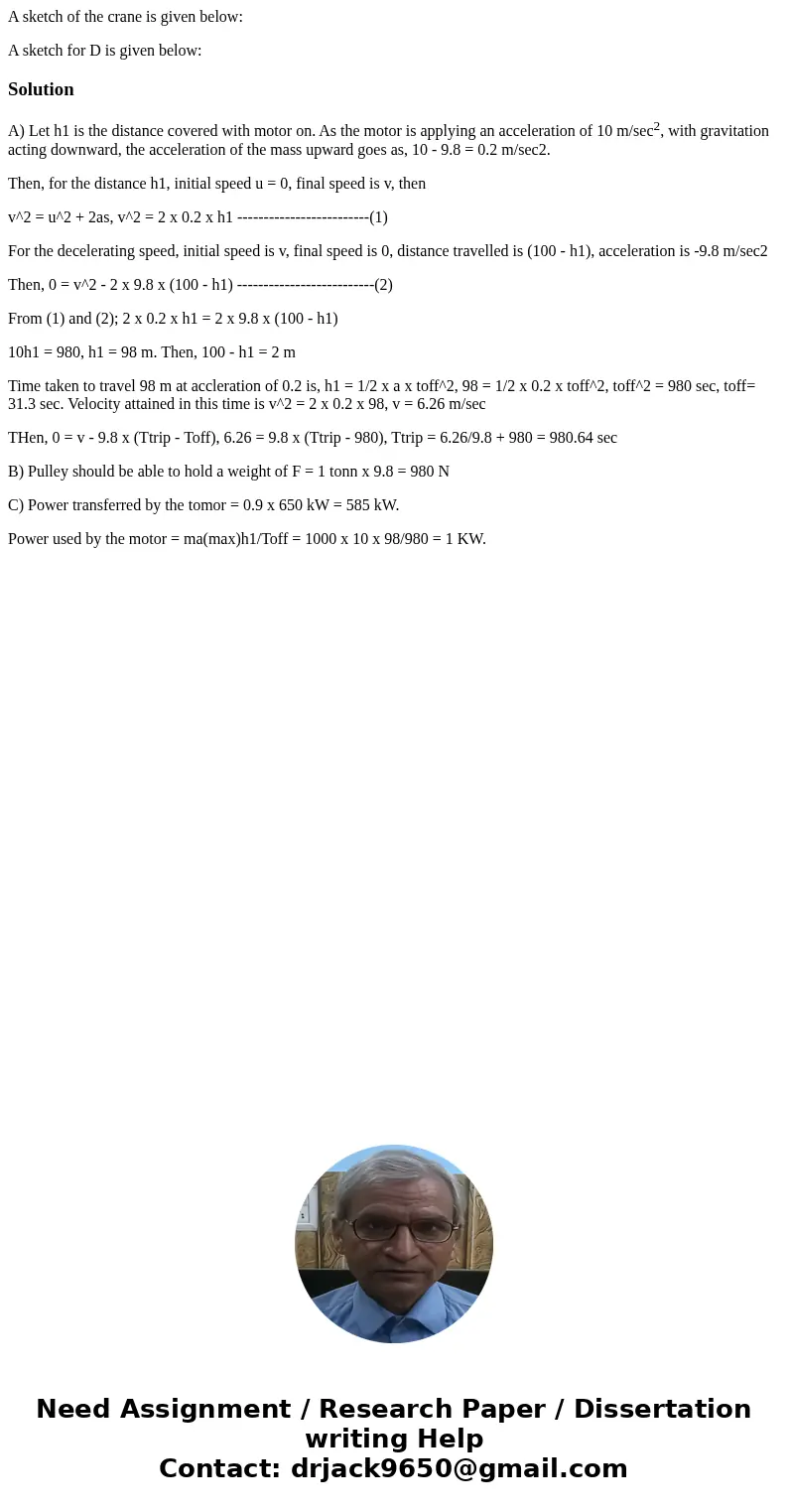A sketch of the crane is given below A sketch for D is given
A sketch of the crane is given below:
A sketch for D is given below:
Solution
A) Let h1 is the distance covered with motor on. As the motor is applying an acceleration of 10 m/sec2, with gravitation acting downward, the acceleration of the mass upward goes as, 10 - 9.8 = 0.2 m/sec2.
Then, for the distance h1, initial speed u = 0, final speed is v, then
v^2 = u^2 + 2as, v^2 = 2 x 0.2 x h1 -------------------------(1)
For the decelerating speed, initial speed is v, final speed is 0, distance travelled is (100 - h1), acceleration is -9.8 m/sec2
Then, 0 = v^2 - 2 x 9.8 x (100 - h1) --------------------------(2)
From (1) and (2); 2 x 0.2 x h1 = 2 x 9.8 x (100 - h1)
10h1 = 980, h1 = 98 m. Then, 100 - h1 = 2 m
Time taken to travel 98 m at accleration of 0.2 is, h1 = 1/2 x a x toff^2, 98 = 1/2 x 0.2 x toff^2, toff^2 = 980 sec, toff= 31.3 sec. Velocity attained in this time is v^2 = 2 x 0.2 x 98, v = 6.26 m/sec
THen, 0 = v - 9.8 x (Ttrip - Toff), 6.26 = 9.8 x (Ttrip - 980), Ttrip = 6.26/9.8 + 980 = 980.64 sec
B) Pulley should be able to hold a weight of F = 1 tonn x 9.8 = 980 N
C) Power transferred by the tomor = 0.9 x 650 kW = 585 kW.
Power used by the motor = ma(max)h1/Toff = 1000 x 10 x 98/980 = 1 KW.

 Homework Sourse
Homework Sourse